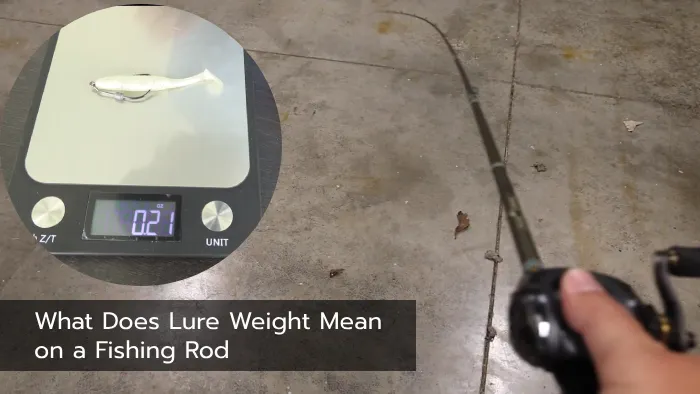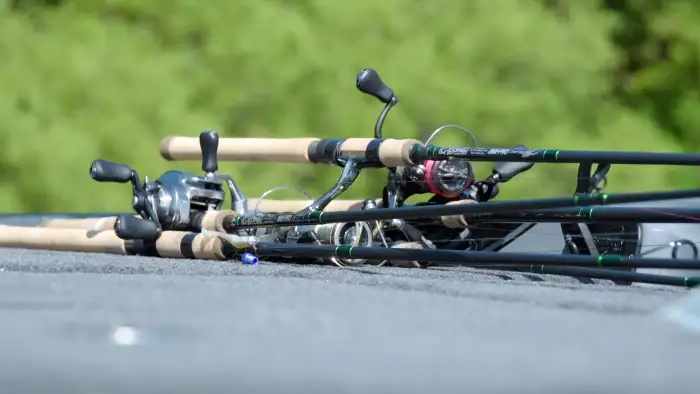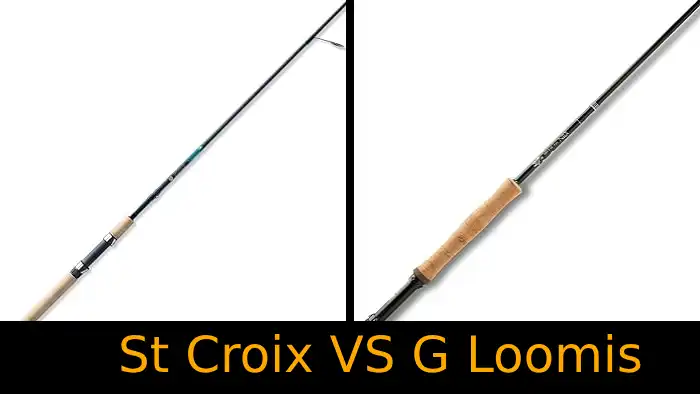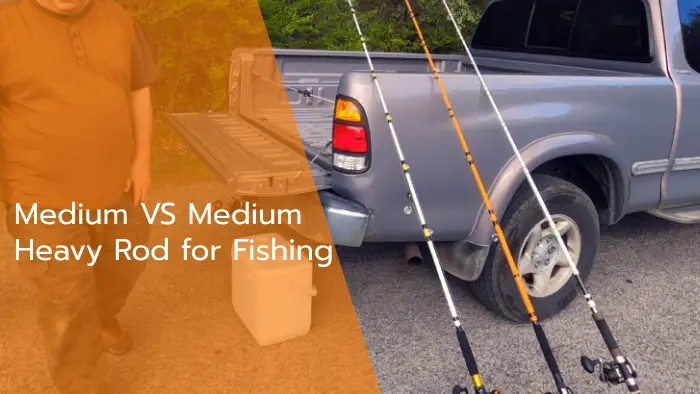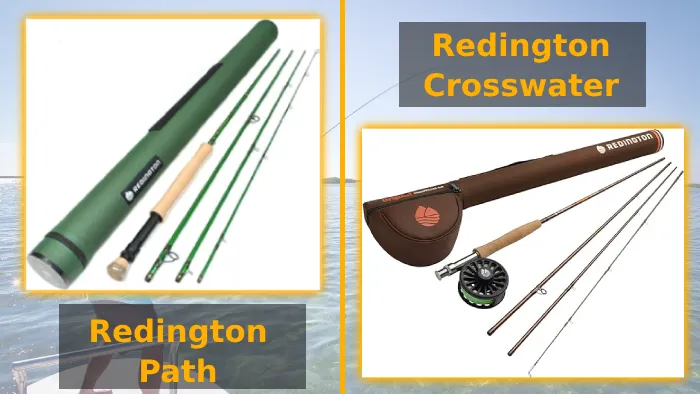What Does Lure Weight Mean on a Fishing Rod: Uncover the Truth with 6 Factors
The lure weight on your fishing rod directly affects the success of your fishing trip. Perfect lure weight is the best method for loading your fishing rod upon the cast. But have you ever wondered what lure weight means on a fishing rod and how much is the right lure weight?
On a fishing rod, lure weight is primarily used to describe the appropriate weight to load the rod before casting. The weight rating of your rod is usually listed on it. Using this information, you can determine the weight and lightness of the lure assembly you should use for that particular rod.
So, knowing the lure weight on your fishing rod can make a big difference in your casting distance. This article aims to explain how lure weight affects your casting and how to match it according to your fishing rod rating.
How Does Lure Weight Affect Fishing Casting?
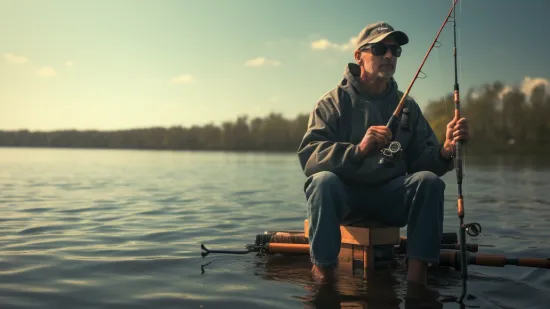
When casting for fishing, you must understand how lure weight affects your casting technique. Casting is affected by lure weight for the following reasons:
- Casting distance & accuracy
- Targeted depth
- Balance and control
- Rod and reel compatibility
- Preventing overloading & underloading
- Reduced fatigue
Let’s take a closer look at these:
1. Casting Distance & Accuracy
One of the most significant reasons lure weight is vital for casting is its direct impact on casting distance with proper accuracy. Properly weighted lures help you load the rod correctly during casting so that you can make more accurate casts. This becomes crucial when targeting specific areas or trying to reach distant fish.
Heavier lures can be cast farther than lighter ones due to the added weight providing momentum and increasing the casting range. If you are fishing in deeper waters or need to cover a larger area, opting for heavier lures can help maximize your casting distance.
2. Targeted Depth
Lure weight is closely linked to the depth at which your bait or lure will swim. If you want to increase your chances of catching fish, consider adjusting the weight of your bait or lure based on the targeted depth. Lure weight determines how deep your bait will swim in the water.
Heavier lures sink faster and reach deeper depths quickly, while lighter lures stay closer to the surface. Different fish species prefer different depths, and matching the lure weight to the desired depth is critical for success.
3. Balance and Control
Another primary reason for matching lure weight to rod rating is to maintain balance and control during casting. Maintaining balance and control during casting is essential for accurate and controlled line management.
When you match the lure weight to your rod rating, you ensure that your setup remains well-balanced, allowing for smooth and precise casting. The balance is crucial because it affects your overall feel and control over your fishing rod.
When the lure is too heavy, your rod may feel tip-heavy, making it difficult to maintain control during the cast. Alternatively, if the lure weight is too light, your rod may feel bottom-heavy, impacting your ability to cast and control your line accurately.
4. Rod and Reel Compatibility
Using the appropriate lure weight is not just about the lure itself. It also affects your entire fishing setup, including the rod and reel. Lure weight refers to the recommended weight range of lures that a fishing rod can handle effectively. It is typically indicated on the rod or the manufacturer’s specifications.
If the lure weight is too heavy for your rod, it can strain the equipment and potentially lead to breakage. On the other hand, if the lure weight is too light for a heavy rod, you may experience poor casting distance and accuracy.
5. Preventing Overloading & Underloading
If you want your lure to cast well, ensure it’s within the recommended weight range for your rod and reel setup. Overloading your rod with a too-heavy lure can strain the rod’s blank excessively, potentially leading to damage or breakage. Fishing can also become tiring and physically challenging due to it.
Conversely, using a lure that is too light for your rod can result in underloading. This means the rod won’t bend or flex properly during the cast, reducing power and distance. It can also affect the presentation of the lure to the fish, potentially decreasing your chances of a successful catch.
6. Reduced Fatigue
Using the correct lure weight for your fishing conditions reduces the physical strain on the angler. You can decrease fatigue by using the appropriate lure weight, which allows you to cast comfortably for longer periods without excessive effort.
When the lure weight is too heavy, it requires more force to cast, straining your muscles and causing fatigue to set in quickly. Conversely, if the lure weight is too light, you may overcompensate by using more force to cast, leading to muscle fatigue.
How to Match Lure Weight According to Your Fishing Rod Rating?
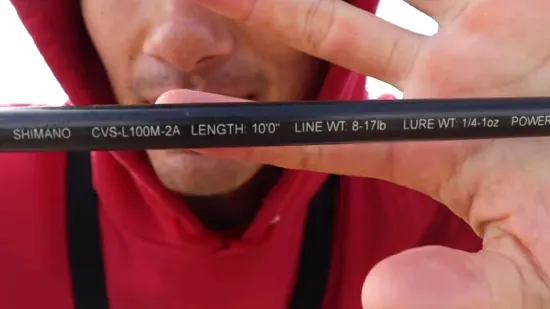
Several steps must be considered when matching lure weight to your fishing rod, such as:
STEP 1. Understand Rod’s Ratings & Weight Range
Understanding rod ratings and weight range is essential when choosing the right fishing rod for your needs. The rod’s power rating indicates its strength or lifting power, while the action rating describes how it flexes. These ratings are typically printed on the rod, so you can easily find them.
For example, a rod may be rated for 1/4 oz to 5/8 oz lures. It is designed to handle lures within this weight range effectively. Check your fishing rod’s recommended lure weight range, as the manufacturer usually provides this information.
STEP 2. Consider the Type of Fishing
The type of fishing you plan to do also plays a role in lure selection, so consider this when choosing your fishing rod. Different types of fishing require different techniques and equipment.
For example, if you plan on freshwater fishing, you’ll likely use smaller lures and target smaller fish. In this case, a lighter power rating on your rod would be more suitable.
Alternatively, if you’re going for bigger fish in saltwater or deep-sea fishing, you’ll need heavier lures and a rod with a higher power rating to handle the weight and the fight of these fish.
STEP 3. Select Lures Within the Range
Now that you have considered the type of fishing you will be doing, it’s time to select lures within the recommended weight range for your fishing rod.
The lure weight refers to the optimal weight of the lure that your rod is designed to handle. Choosing lures within this range is crucial for achieving the best casting distance, accuracy, and overall performance.
Using too heavy lures for your rod can cause it to bend excessively, affecting your casting distance and accuracy. On the other hand, using lures that are too light may need to provide more weight for proper casting and control.
STEP 4. Weigh Your Lures and Hooks
Simply use a fishing scale or balance to determine the combined weight of your lures and hooks accurately. Know the weight of your lures and hooks because it affects the performance of your fishing rod.
Lure weight corresponds to the weight of the lure itself, excluding any additional tackles or hooks. When choosing lures, selecting ones that fall within the weight range recommended for your fishing rod is crucial. This ensures that your rod can handle the weight and allows for proper casting and retrieval.
STEP 5. Test Your Casting for Accuracy
After weighing your lures and hooks, it’s time to test your casting for accuracy. This step is crucial in effectively delivering your lure to the desired target.
To begin, position yourself in an open area with enough space to practice your casting without obstructions. Hold your fishing rod firmly, ensuring your wrist is locked, and your forearm is parallel to the ground.
With a smooth and controlled motion, bring your rod back behind your shoulder and then swiftly move it forward, releasing the line at the right moment to achieve maximum distance.
As you practice, pay attention to your body positioning, arm movement, and timing to improve your accuracy and consistently hit your target.
STEP 6. Adjust if Needed
If your chosen lures and hooks are too heavy for your rod, you may need to select lighter options to avoid casting accuracy issues and potential damage. Choosing lures and hooks within your rod’s recommended weight range is crucial to ensure a smooth and accurate cast.
Is it bad to use the maximum lure weight for the rod?
Using the maximum lure weight for your rod may cause the tip to snap and limit your casting accuracy and distance. While it is uncommon for the tip to snap, overloading the rod can lead to a lack of control while casting.
When a rod is loaded to its maximum weight, it becomes more difficult to cast accurately when fly fishing in Nevada or other locations. You will find that it requires a much easier cast, which limits the distance you can achieve in large water areas.
So pay attention to your rod’s recommended lure weight range, as this will ensure optimal performance and prevent any potential damage.
Is casting weight the same as lure weight?
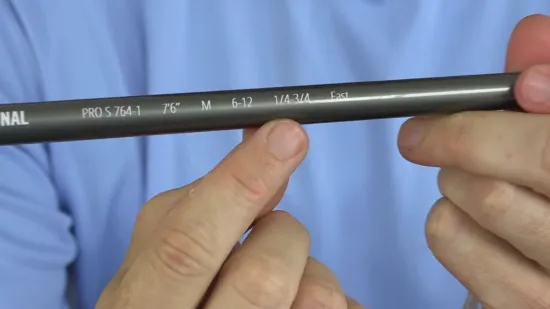
While the terms are often used interchangeably, they do have slight differences. Lure weight refers to the weight of the lure you are casting while casting weight refers to the recommended range of lure weights a rod is designed to handle effectively.
For example, if your lure weighs 10 grams, you must use a rod with a casting weight of 5 to 15 grams if you are fishing with a 10-gram lure.
Do heavier lures cast further?
When casting, remember that heavier lures typically allow you to cast further. The weight of a lure plays a significant role in the distance it can be cast.
This is because a heavier lure has more momentum and can be propelled through the air with greater force. The added weight also helps to overcome air resistance, allowing the lure to travel a greater distance.
Also, heavier lures are less affected by wind, as they are more stable and less likely to be blown off course. However, note that the type of fishing rod and the angler’s casting technique also play a part in determining the casting distance.
So, while heavier lures generally cast further, finding the right balance between lure weight, rod action, and personal casting ability is essential for optimal performance.
Maximize Your Fishing Success with the Right Lure Weight
Choosing the right lure weight is a vital component in determining the success of your fishing trip. With the lure weight information provided on the fishing rod, you can select the ideal lure weight range and optimize your casting performance.
Also, using the highest lure weight for your fishing rod may not be recommended, as it can strain the rod and affect its durability. While casting and lure weights are similar, they are not the same. Remember to consider the species of fish you’re targeting, water depth, and other environmental factors while determining your optimal lure weight. It’s always beneficial to research and experiment to enhance your fishing experience even more.

